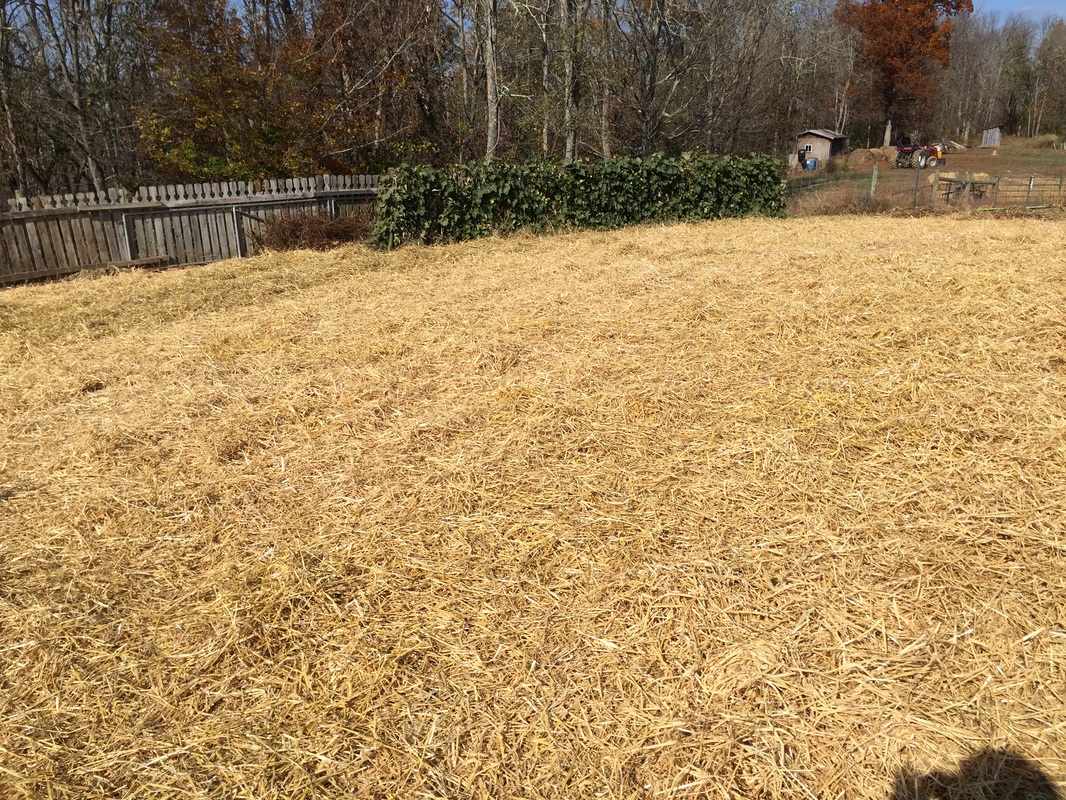|
This is the third year of my experience planting garlic. It all started very small, when the mother of a friend gave me some cloves of Elephant Garlic, which is actually a leek and not a true garlic. They grew beautifully, and made me want to do more. The following year, I did a little research and ordered some hardneck garlic from a mail order site. About 200 cloves were planted. The next year, I added a few more pounds and planted about 700 cloves. Many of the bulbs grew very large, but much to my dismay, we were attacked by the onion maggot, which is a common parasite to garlic and comes from a fly. As a result, I lost about 25% of my crop. This time, I'm trying again and going for aggressive prevention. Soil preparation - The garlic plot has been moved to the garden spot. Rotation of garlic planting sites is important, especially if they've been discovered by the onion maggot. First, pulled up all the remaining plants from the summer, and burned off the grass and weeds. Next, some compost was added and tilled into the soil. Soil testing revealed pH - 7.0, Nitrogen - Low, phosphorus - Medium, Potassium - high. Meanwhile, bulbs were separated for planting. I saved some of the best bulbs from last year's crop, and purchased additional from two regional garlic growers. While I did not count every clove, I am estimating about 2500 cloves to be planted in total. From Mad River Garlic Growers in Ohio: Ischium Red - 13 pounds, Polish white - 1 pound, Nootra rose - 1 pound, Siberian - 1.4 pounds, Killarney Rocambole - 1 pound, Armenian - 1.5 pounds, Magestic Porcelain - 1.5 pounds, Russian White - 5 pounds, Goargian Crystal - 2 pounds From Tangle Ridge Farm: Georgian Crystal - 1 pound, Chesnok Red - 7 pounds, German White - 6.5 pounds, Elephant - 2.5 From Salt River Garlic in Kentucky: (still pending) Music - 10 pounds, Khabar - 5 pounds, Bavarian Purple - 5 pounds Clove preparation - Based on my limited experience and research and advice from garlic growers, I used the following steps to prepare the cloves for planting: Varieties were separated into mesh bags and identified with colored strings to help keep them straight. Warm water soak - Cloves were soaked in a warm water bath. First, warm water from the tap was ran into a large sink until the cloves were covered. This brought them to about 108 - 110 degrees. I allowed them to soak for about 10 - 15 minutes for a gradual increase in temperature. The water was drained, and another tub of hot water filled with a temperature to about 115 - 117 degrees. I allowed the cloves to soak at this temperature for about 30 minutes. As the water cooled, I warmed it up again with hot water to keep a steady temperature. The warm water kills microorganisms without harming the clove. Alcohol soak - The cloves were then bathed in a bucket filled with 70% isopropyl alcohol for 5 - 10 minutes. . Cheap vodka is also a good choice. The alcohol further sterilizes the cloves. This step is often done last, after the next step discussed, but since I was doing small batches and using the alcohol more than once, I wanted to keep it as clean as possible for repeated batches. Fish Emulsion and baking soda - The cloves were place in an overnight soak of fish emulsion (1/3 cup per gallon) and baking soda (1 tablespoon per gallon). Root Maximizer - Micronized mycorrhizal Inoculant (beneficial fungi) - the final step added this year was a dusting in root maximizer powder immediately before planting. Meet the Pink Lady - she was a great helper in digging the holes for planting this year. After planting, the fish emulsion solution was sprinkled onto the rows, along with a little extra since the nitrogen level in the soil was low. In the spring, feeding will begin early as the bulbs begin to grow. Once done, a light spray of NeemAttack - beneficial nemotodes will go on, and possibly another treatment in the spring. The final step, covering the entire area with a thick layer of clean straw for insulation and weed control. And now we wait.
0 Comments
Leave a Reply. |
AuthorMy name is Christy Franklin. Archives
February 2021
Categories |



 RSS Feed
RSS Feed
